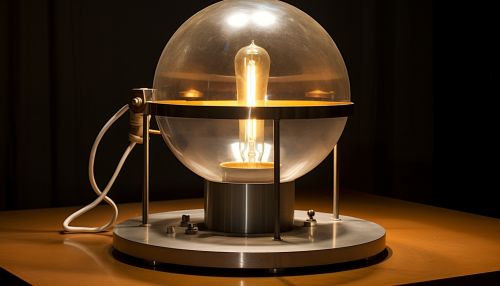Van de Graaff generator
Introduction
A Van de Graaff generator is a type of electrostatic generator that uses a moving belt to accumulate very high amounts of electrical potential on a hollow metal globe. The potential difference achieved in modern Van de Graaff generators can reach 5 megavolts. The generator was invented by American physicist Robert J. Van de Graaff in 1929.


Principle of Operation
The Van de Graaff generator operates on the principle of electrostatic induction and the movement of charge through mechanical means. It consists of a large hollow sphere mounted on an insulating column, a rubber belt, two metal combs, and a lower pulley driven by a motor.
The operation of the Van de Graaff generator begins with the motor turning the lower pulley, which in turn moves the rubber belt. The lower metal comb is connected to a source of high voltage, such as a power supply. This comb is placed close to the belt so that its sharp points are near the belt surface but not touching it. The high voltage ionizes the air near the points of the comb, creating positive ions and free electrons. The electrons are attracted to the positive high voltage comb, leaving the positive ions behind on the belt.
As the belt moves up, it carries the positive charge to the upper comb. The upper comb is connected to the inside of the hollow sphere. The positive ions on the belt induce a negative charge on the sharp points of the upper comb. The positive ions are then neutralized by the electrons from the comb, leaving the sphere with a net positive charge. This process repeats, building up a large amount of positive charge on the sphere.
Applications
Van de Graaff generators have found a wide range of applications in various fields. In physics laboratories, they are used to accelerate particles to high speeds for nuclear physics experiments. In medicine, they are used in radiation therapy to treat cancer. In industry, they are used for insulation testing and electrostatic precipitation.
Safety Considerations
While operating a Van de Graaff generator, certain safety precautions must be taken. The high voltage produced by the generator can cause electric shock if not handled properly. It is also important to avoid touching the generator while it is in operation, as this can lead to a painful shock.
